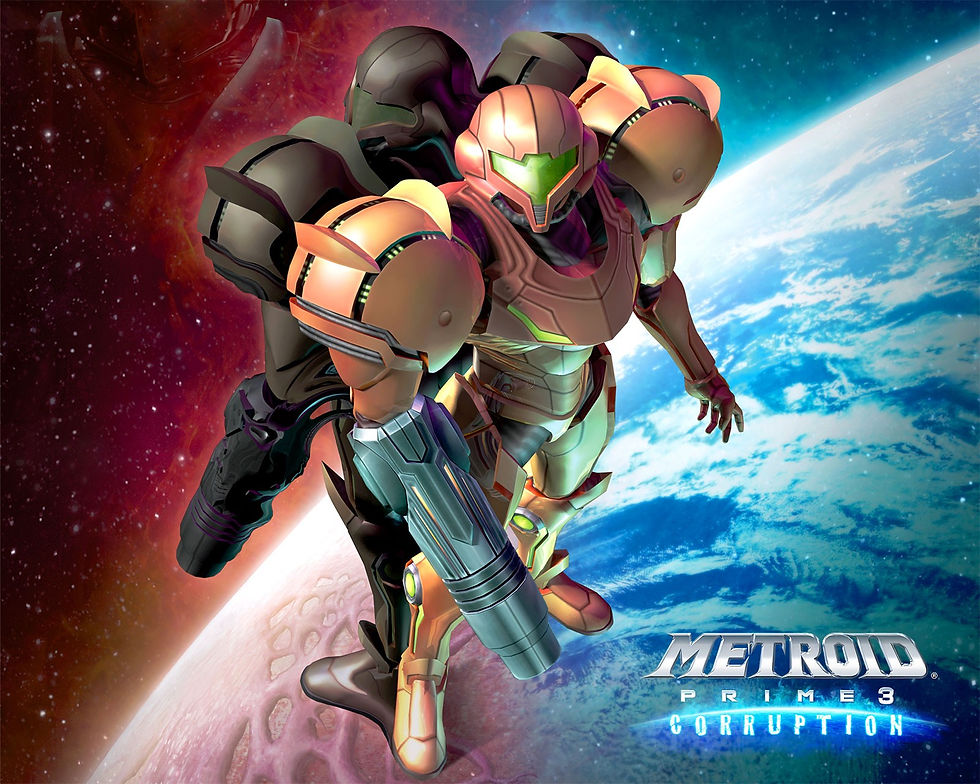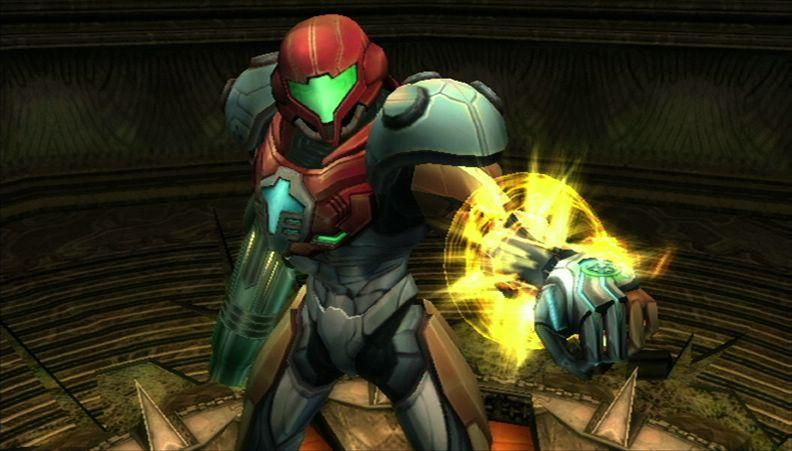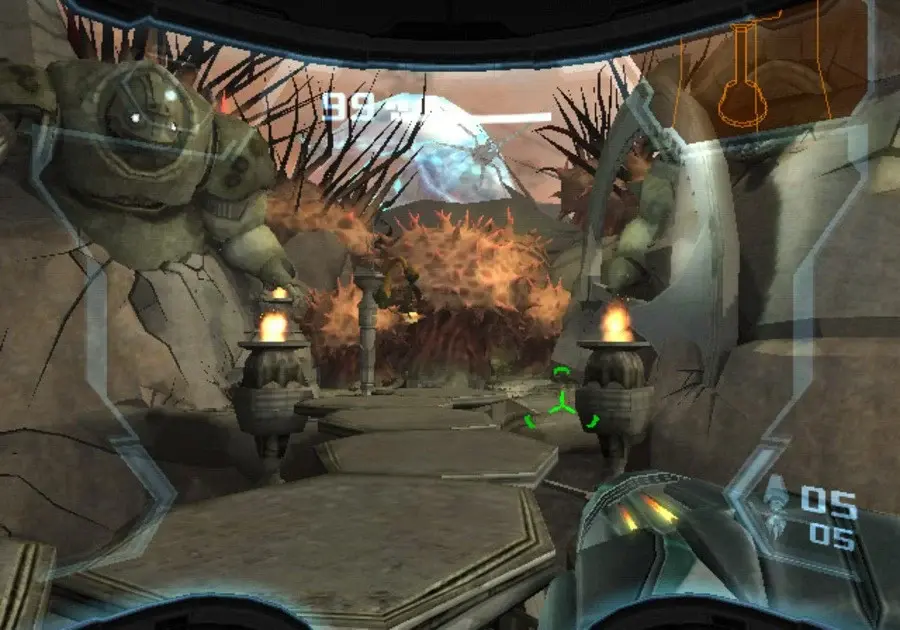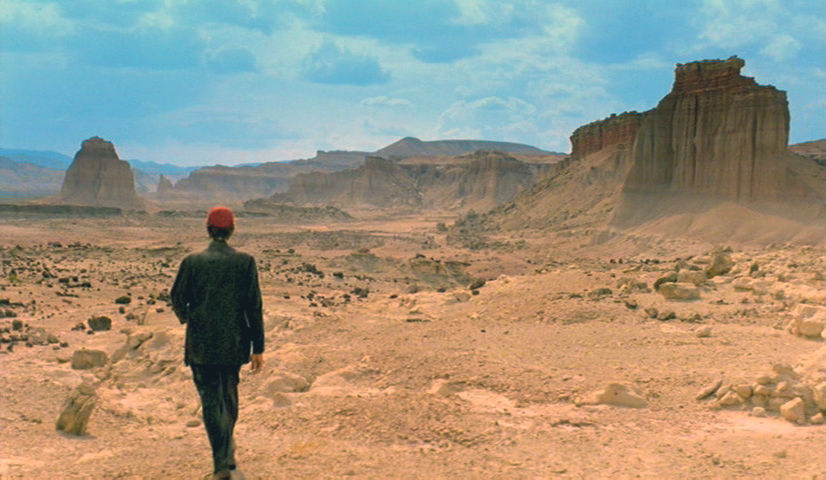Metroid Prime 3: Corruption
- decapvada
- Mar 11, 2024
- 3 min read
After ridding the corruption of Phazon on Talon IV and Aether, Samus Aran faces a galaxy-wide threat in the conclusion to the Metroid Prime series, a game that like many others of the Wii era, attempts to create a middle ground between accessibility and gameplay.

Whether the series should be called a first-person adventure or shooter is irrelevant, versus the previous instalments, Corruption is taking steps to brand itself in the shooter mould. Utilising the Wii pointer and Nunchuk in replication of the mouse and keyboard in the most successful attempt on the system yields a responsive and intuitive result. Perhaps the general first-person shooter player would prefer the screen to move with the aim and have fine-tuning available via a button like Goldeneye, however. Thankfully there is still an Ocarina of Time style lock-on feature for strafing.
While the controls may not have the same pick-up-and-play nature as many games on the system, Corruption is easier than previous entries. Most enemies pose little threat being wildlife and fauna and coupled with the new freedom of aiming and the lifting of the restrictions of the Gamecube controller, bosses have had a clear reduction in struggle. With the addition of the new Hyper Mode, where Samus can channel the Phazon corrupting her body into a supercharged power beam, Samus is an unstoppable killing machine.

Many of the planets in Prime 3 feel more like individual biomes than ever before rather than connected natural sections. Another design choice included is fast travel. While its presence sees smart use of Samus’ Gunship, the implementation of shoehorned teleportation in Dread and even Samus Returns at least helps to keep the worlds their respective games are set in feel whole. Overall, Echoes is still the leader in this area.
Corruption’s worlds are for the most part up to the standard of previous games. While Prime may have been more concerned with Chozo architecture and presenting a traditional Metroid template with fire, ice and overworld areas, Echoes was incredibly effective at presenting desperate, dark realms for Samus to explore, including the damp beauty of Torvus Bog. In Prime 3, Sky City Elysia is an absolute franchise highlight. Its stunning, ethereal musical theme inspires as you explore a fascinating world touched by, yet not owned by the Chozo, effectively deepening their lore as much as Tallon IV. Another first, the Space Pirate home world, has its sections connected smartly via a tram system, furthering its aesthetic and disguising the segregated nature of the level design. That these design choices were applied to try to steer away from the series' typical use of elevators is obvious, it is no less or not more effective for the most part.

In an idea carried over from the Nintendo DS mini-sequel/spin-off Metroid Prime Hunters, Samus faces off against three of her bounty hunter ‘friends’ under the influence of Dark Samus. Even though Corruption is by far the Metroid entry most filled with story, as there are many action cutscenes, space battles and spoken dialogue interactions, Samus herself is still completely silent aside from usual grunts. This weakens her relationship with the hunters dramatically, as although there is some physical acting from her, actual spoken words between voiced characters cannot be competed with in displaying feelings. There is, however, Gandrayda annoyingly referring to the hunter as ‘Sammy’ in a display of unintentional patronisation that really should have been cut.
Later, the story flow builds to a disappointing crescendo, as Samus eventually fights alongside the galactic federation in a final assault against her diabolical clone. Many fantastic boss fights are overcome leading to this point in the narrative, and the final three-stage fight is not nearly as impressive as Metroid Prime or even Emperor Ing, leaving the ending somewhat flat and unsatisfactory. Samus’s mission is again accomplished and she reflects on the death of her hunter friends in a sequence of flashbacks that do little to share any emotional weight.

While this may sound like a negative perspective there is plenty of the DNA from the previous entries to warrant positivity. Due to the nature of the narrative, there is less isolation despite the game wanting you to think that you are alone in alien worlds exploring, and at times Corruption nearly succeeds. The art design is as strong as ever, there are plenty of items to find, puzzles (on foot and via morph ball) to solve, and interesting mechanics to learn, waggle or not. Both Metroid Prime and Echoes were two of the finest games of their generation and if Corruption does not quite reach the heights of its younger siblings due to Retro, and likely Nintendo’s casual audience mandates, it has enough highs to warrant its place in this most prestigious of series.
Just be sure to play the original Wii version and not the Metroid Prime Trilogy release if possible. The collection omits the original menu theme, which is absolutely fantastic in setting the stage for the conclusion of this fine trilogy with its emotive choral cries.




Comments